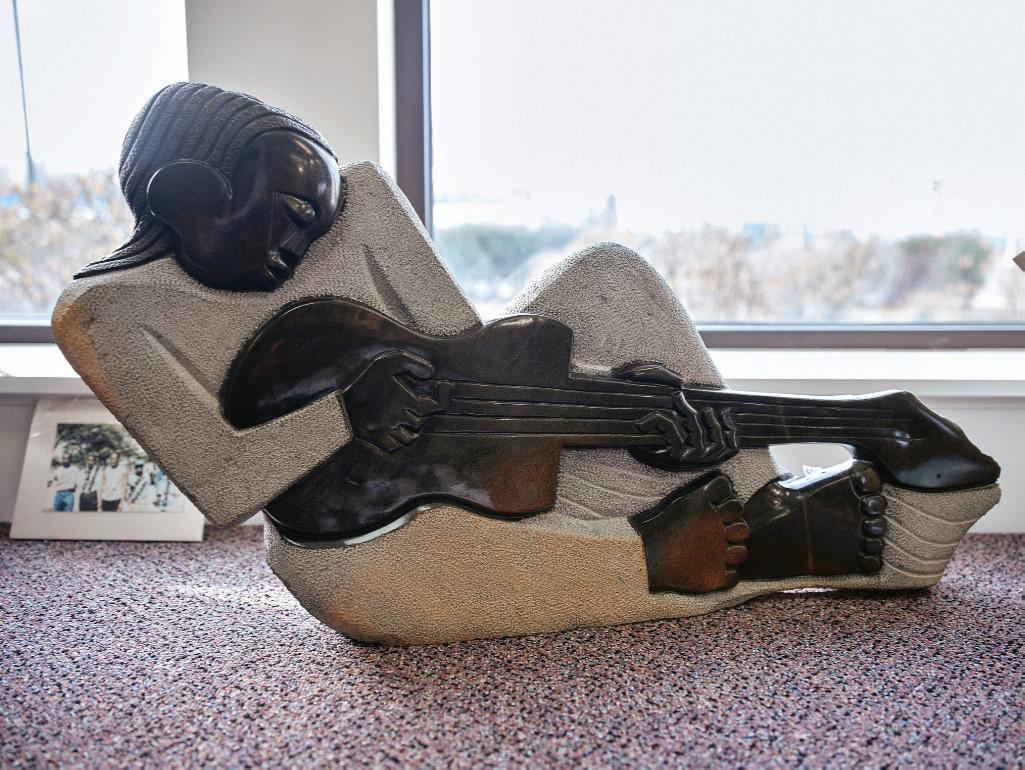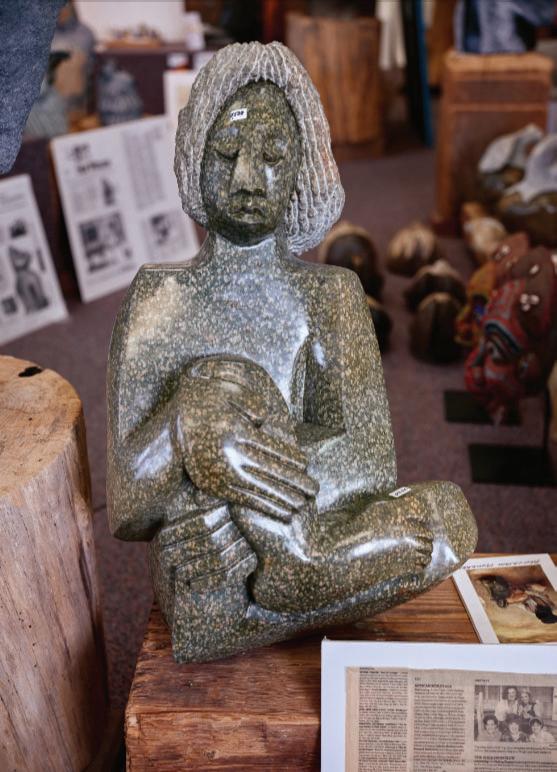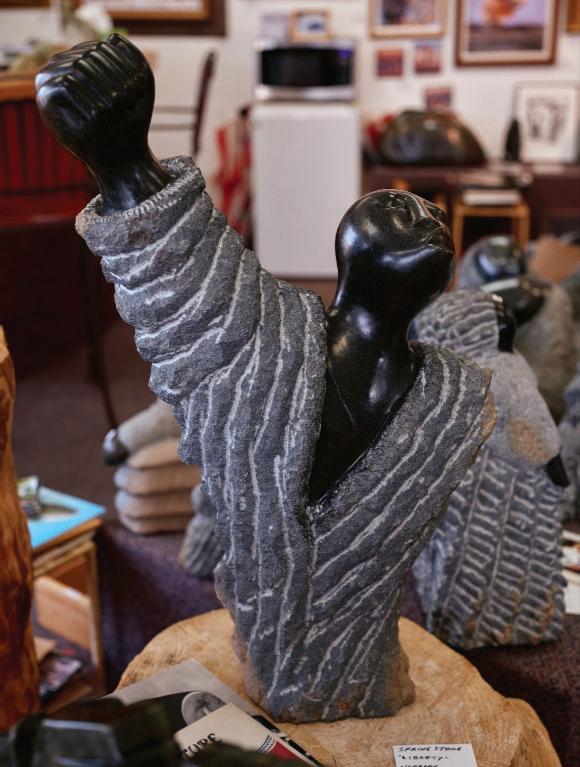




By Stacy M. Brown
As the nation prepares to celebrate Martin Luther King Jr. Day, significant disparities remain between the income and employment rates of white and Black Americans. In response, WalletHub has
released its comprehensive report on the “States That Have Made the Most Racial Progress,” evaluating 22 key indicators of equality across all 50 states and the District of Columbia, including median annual household income, standardized test scores, and voter turnout. Texas tops the list as the state that has made the most racial progress, particularly in reducing
health disparities and closing gaps in the business sector. Wyoming and Mississippi also show significant income levels and poverty reduction improvements, respectively. The report identifies regions with the highest and lowest disparities, noting that Hawaii has the smallest median annual income gap, while the District of Columbia has the largest. Expert commentary
within the report points to historical discrimination in housing and lending as significant contributors to racial wealth gaps. Dr. Rodney Coates of Miami University suggests that state and local authorities can help reduce these disparities through equitable funding for education and incentives for businesses to operate in economically disadvantaged areas. WalletHub Analyst Chip
Lupo stated, “Wyoming has closed the racial income gap by 42 percentage points since 1979, and Mississippi has decreased disparity in poverty levels by 27 percentage points since 1970.”
Dr. Edlin Veras of Swarthmore College adds, “The major causes of the racial wealth gap are undoubtedly tied to the legacies of slavery and white supremacy. Black people’s concerted and systematic exclusion from
business,
and land ownership in the United States has long-term
that are still evident
By Adam McCann
Financial Writer
Although the U.S. has made a lot of progress toward racial equality since the Civil Rights Movement, we still need to do better to ensure equal opportunities for everyone. A startling 44% of Americans feel either somewhat or very pessimistic about whether the country can bring about racial equality. Only 28% feel somewhat or very optimistic.
It’s easy to see why people are pessimistic about equality when you look at economic data. For example, the median yearly income of white, non-hispanic men is around $20,000 higher than that of Black men, and the unemployment rate is vastly higher for Black people than white people.
As we think about ways to improve equality in the future, we can also recognize the steps toward racial harmony we’ve already achieved — in our workplaces, in our schools and in our voting booths. To highlight the states that have improved the most, WalletHub measured the gaps between Black people and white people across 22 key indicators of equality in each of the 50 states and the District of Columbia.
Our data set ranges from median
annual household income to standardized-test scores to voter turnout.
In-Depth Look at the States With the Most Racial Progress
Texas
The state that has made the most racial progress over the past few decades is Texas, in large part because it has done a lot to close the gap in health outcomes between white and Black residents. The state has reduced the gap in health insurance coverage by 12.4 percentage points since 1995, the most of any state. In addition, Texas has done the most to decrease the share of Black residents suffering from poor health and diabetes. It’s made the second-most progress when it comes to obesity, too. Texas has also made a lot of racial progress in the business sector. For example, between 2002 and 2021, the gap in business ownership between white and Black residents decreased by 6.4 percentage points, the sixthlargest decrease in the nation. The disparity in the share of business executives who are white vs. Black also decreased by close to 8 percentage points, the seventh-largest decrease.
Finally, Texas is the fourth-best state when it comes to making racial progress in the parole system,
which is important since Black people have faced a lot of discrimination in the criminal justice system throughout history.
Wyoming
Wyoming has made the second-most racial progress. For one thing, it has reduced the gap between the earnings of white and Black Americans by over 42 percentage points since 1979, the largest reduction in the nation.
Wyoming has also made great strides when it comes to education, cutting the disparity between the share of white and Black residents who have at least a bachelor’s degree by 19 percentage points since 1970. Making educational attainment more equitable is likely one of the major reasons why there has been so much progress when it comes to salaries, as higher education correlates with higher earnings.
On top of that, Wyoming ranks as the third-best state for progress when it comes to unemployment, and the 12thbest for improving the amount of Black residents in executive positions.
Mississippi
Mississippi has closed the poverty rate gap by nearly 27 percentage points since 1970. That is the most significant reduction in the
U.S., and one of the main reasons why Mississippi ranks as the state that has made the third-most racial progress. It also ranks as the seventhbest state for reducing the household income disparity.
Another place Mississippi stands out is improving voter participation. Between 1980 and 2020, the gap in voter participation rates between white and Black residents shrank by 15 percentage points. Making progress in this area is vital for ensuring that no one is disenfranchised, so everyone who wants to vote is able to.
Finally, Mississippi has improved outcomes when it comes to health. For example, it is the second-best state when it comes to progress on overall health and the fourth-best for closing the gap in healthinsurance coverage between white and Black residents.
Ask the Experts
The harsh realities of racial segregation and discrimination are no longer as visible in America as they once were — but they persist. In order to understand the driving forces behind such problems and possible solutions, we asked a panel of experts to share their thoughts and ideas. Click on the experts’ profiles to read their bios and responses
to the following key questions:
What are the major causes of the racial wealth gap between Black and white households?
What can state and local authorities do to help reduce racial gaps in wealth, employment and education?
Should state and local authorities work to reduce racial segregation in housing? If so, how?
Why have some states been more successful than others in addressing racial inequalities?
Methodology
In order to determine the most racially integrated states and those that have achieved the most racial progress over time, WalletHub compared the 50 states and the District of Columbia across four key dimensions: 1) Employment & Wealth, 2) Education 3) Social & Civic Engagement and 4) Health.
We evaluated those dimensions using 22 relevant metrics, which are listed below with their corresponding weights. Each metric was graded on a 100-point scale, with a score of 100 representing the highest level of racial integration and progress.
This analysis compares only Black people and white people in light
of racial tensions in recent years that sparked the Black Lives Matter movement. We released this report ahead of the holiday honoring Dr. Martin Luther King Jr., who played a prominent role in the Civil Rights Movement to end segregation and discrimination against Black people.
We ranked the states and the District of Columbia based on two key measures: Racial Integration – Determined by subtracting the values attributed to white people and Black people for a given metric, using only the most recent available data. Racial Progress – Determined by subtracting the values attributed to white people and Black people for a given metric, using the oldest available data and the most recent. Based on the result, we calculated the percentage of progress for that specific metric in the analyzed period. If in some states Black people scored as high as or better than white people on a given metric, all such states were awarded the maximum number of points. Finally, we determined each state and the District’s weighted average across all metrics to calculate its total score and used the resulting scores to rank-order the states.
year, now will serve as CoPresider of the Senate because Republicans now have an equal number of members owing to the death of DFL Senator Kari Dziedzic.
“We can always look to the past, point fingers, or cast blame, but it takes courage and cooperation to see the bigger picture, to see what is important for Minnesotans, to decide to go forward,” he said.
“This week, as a Senate, we made a commitment to move forward together,” Champion said.
“I am honored to be selected alongside Senator Jeremy Miller to serve as Co-
“The Senate is in a historic 33-33 tie after the passing of my dear friend and colleague, Senator Kari Dziedzic,” Champion said in a statement Wednesday. “I want to thank the Senate for choosing this challenging time as an opportunity to come together instead of drive each other apart.”
Presiders of the Minnesota Senate.” “We have been entrusted to make sure the Senate will continue forward in respect for one another, for our constituents, and for our state. For the first time in the Minnesota Senate’s History, we will temporarily have 2 CoPresiders, one being Democratic and one being Republican. I am honored to have been entrusted with that title and I look forward to serving our great state.,” Champion said. #MNLeg #Minnesota #StateSenate
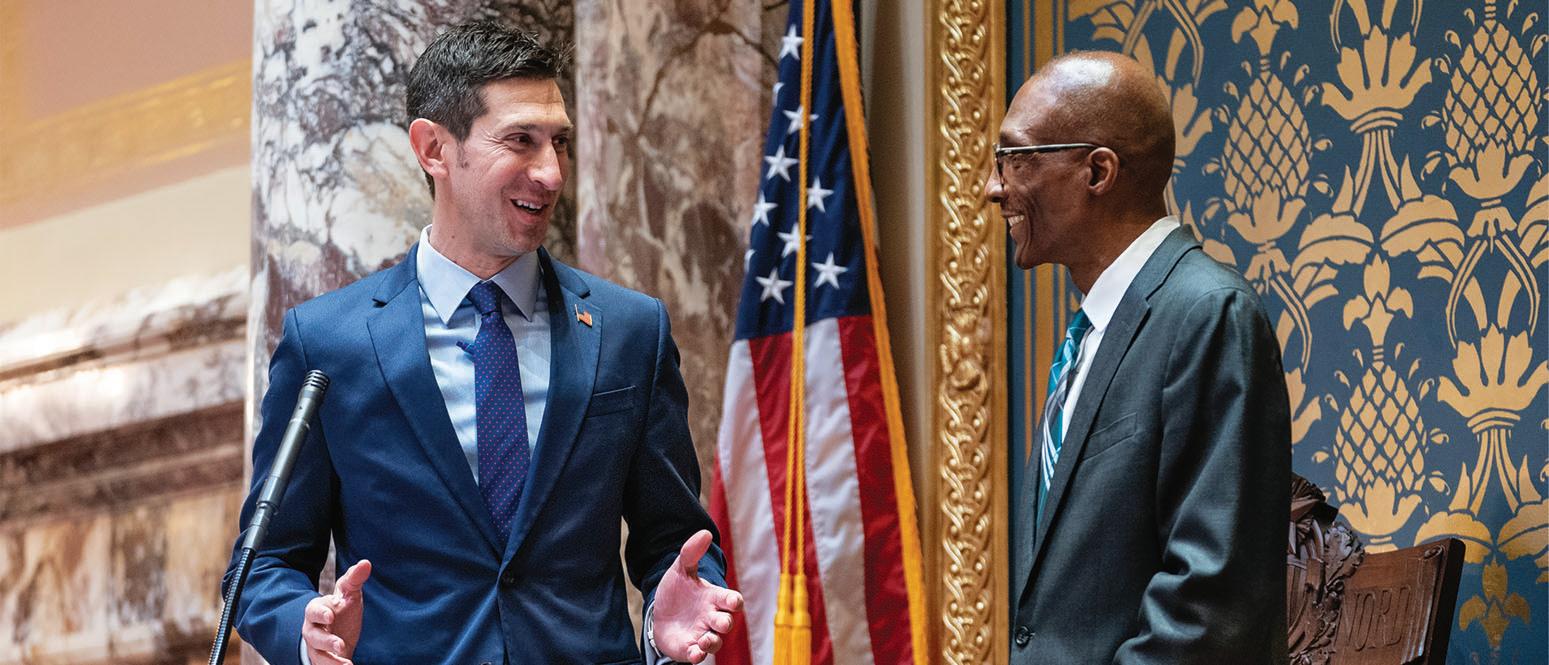

By Haley Taylor Schlitz, Esq.
Imagine logging into a world that feels like home, a place where your identity, creativity, and voice have room to thrive. For my generation, Generation Z, this world has largely been shaped by social media platforms, spaces where activism meets art, where connection meets culture. From our first shared baby photos our parents posted on Facebook to the rapid-fire creativity of TikTok, social media has not only documented our generation’s growth but defined it. These platforms have become our public squares, our stages, and our classrooms.
But what happens when those spaces are no longer safe or accessible, and the companies behind these platforms decide who gets to be seen, who gets to speak, and whose stories are erased? Social media is
taking a new path, one that threatens to dismantle the very connections and communities it once promised to foster. This moment demands more than passive observation, it requires us to interrogate the power dynamics shaping the future.
This week’s headlines illustrate how these stakes are playing out in real time. AXIOS recently obtained a memo from Meta’s vice president of human resources, Janell Gale, informing employees that the company would be ending its diversity, equity, and inclusion programs effective immediately. This includes diversity, equity, and inclusion efforts in hiring, training, and selecting suppliers. Gale’s memo justified the decision by citing recent Supreme Court decisions and claimed that “The term ‘DEI’ has also become charged, in part because it is understood by some as a practice that suggests preferential treatment of some groups over others.”
Meta’s stated mission is to “Build the future of human connection and the technology that makes it possible.” Yet, Meta’s decision to end its diversity, equity, and inclusion programs directly contradicts
that mission. How can an organization claim to build the future of connection while dismantling the very efforts that ensure those connections are inclusive and equitable? Technology does not simply mirror society; it shapes it. These platforms and tools determine what is seen as truth, influence how people are treated, and define who gets to participate in shaping the future.
When diversity is stripped away from these processes, it doesn’t just perpetuate existing biases, it engrains them into the very foundations of business, media, and technology.
Social media companies, in particular, face a unique responsibility. Their algorithms and platforms are already rife with biases that reinforce stereotypes and marginalize certain voices.
When combined with the rise of artificial intelligence, the end of diversity efforts in these spaces could enshrine systemic racism, sexism, and other forms of discrimination into the DNA of the tools that now drive global communication and information.
The erosion of diversity, equity, and inclusion programs is more than just a
shift in corporate policy. It’s a signal about whose voices and experiences are valued within these institutions. When companies abandon initiatives that aim to level the playing field, they reinforce a status quo that has historically excluded marginalized groups from positions of influence and decision-making. This isn’t just a setback for employees; it’s a setback for society, as these platforms shape public discourse, amplify certain narratives, and silence others. These events are not isolated. Together, they paint a clear picture of regression, a deliberate attempt to stifle progress and maintain existing hierarchies. Dr. Martin Luther King Jr. once said, “Change does not roll in on the wheels of inevitability, but comes through continuous struggle.”
This moment is a reminder that progress is neither linear nor guaranteed. It must be fought for in boardrooms, in government chambers, and on digital platforms where the future is being shaped in real time.

Gen Z has already shown a willingness to step into this fight. With our diversity, digital fluency, and relentless determination, we are challenging the systems that seek to exclude us. But we cannot do it alone. If we believe in Dr. Martin Luther King Jr.’s call to “make justice a reality for all of God’s children,” we must stand together. This means demanding accountability from corporations like Meta, confronting the lack of diversity in their ranks, and recognizing the danger it poses to the very existence of marginalized people. Refusing to let the dismantling of diversity, equity, and inclusion programs become the norm is essential to ensuring that technology does not perpetuate systemic harm. The
By Teshome M. Borago
Oromo and Ethiopian communities in Minnesota and across the globe lost a moral leader earlier this week with the death of Bulcha Demeksa at the age of 94.
Bulcha was a notable economist (graduating from Addis Ababa and Syracuse Universities) who served in the Ethiopian Ministry of Finance in 1967 and as the African director at the World Bank and founded the Awash International Bank. He also worked at the United Nations, where he highlighted discrimination facing black African
officials in the organization.
Bulcha later became a member of the House of People’s Representatives in 2005 as the founder and leader of the Oromo Federalist Democratic Movement.
Almost 20 years ago, Bulcha was the first high-
profile leader to be interviewed by Yeroo magazine, supporting the first private Qubee Oromo newspaper in Ethiopia.
While in parliament, he bravely spoke in front of dictator Meles Zenawi, highlighting atrocities committed by the then-ruling TPLF party. In a diverse country like Ethiopia, where injustice often has ethnic dimensions, it is impossible to ignore ethnic grievances as a civil servant.


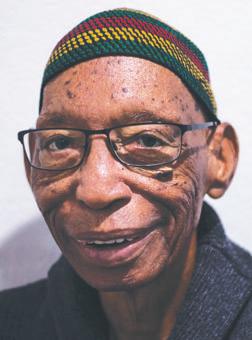
Accordingly, Bulcha carried a healthy dose of both civic and ethnic nationalism, being a voice for marginalized Oromo people while promoting Ethiopian unity. Even at an old age, Bulcha remained an outspoken critic of the status quo.
In this momentous period in the history of the Horn of Africa, Ethiopians worldwide — including those in Minnesota, which has one of the largest Ethiopian communities in the United States, including many people from the African nation’s ethnic Oromo region — will miss a staunch defender of the nonviolent struggle for democracy.
The cycle of violence continues in Ethiopia today as Oromo, Amhara, Tigray
and other militant groups use “armed struggle” to solve irreconcilable territorial disputes that require land sharing. Unlike Bulcha, even diaspora intellectuals today justify and romanticize the concept of using “armed struggle” as a strategic tool to gain leverage at the next negotiating table. Western diplomats and foreign policymakers who truly care about human rights should urge all political actors in Ethiopia (and in the diaspora) to honor Bulcha’s legacy by adopting unconditional and peaceful political competition at the ballot box. Teshome M. Borago is a New York-based political analyst and writer.
mix. Bulky coats can compress in a crash and create a loose car seat harness. Instead, lay the jacket or a blanket over the children once you’ve safely strapped them into their car seat.
Keeping Healthy Outdoors
There’s no set amount of time for children to play outside safely when the weather is cold. Use your best judgment. When the cold becomes unpleasant, it’s time to go inside. If you are unsure if weather conditions are safe for outdoor play, check the Child Care Weather Watch Chart. Have children come indoors periodically to prevent hypothermia or frostbite. A temperature of 0 degrees Fahrenheit and a wind speed of 15 mph creates a wind chill temperature of -19 F. Under these conditions, frostbite can occur in just 30 minutes.
Frostnip is an early warning sign of frostbite. The
skin may feel numb or tingly or appear red (on lighter skin). To prevent frostbite, check that mittens and socks are dry and warm. Frostbite occurs mostly on fingers, toes, ears, noses, and cheeks. The affected area becomes very cold, firm, and, depending on the color of the skin, turns white, yellowishgray, or gray. Even though it’s cold outside, it’s important to use sunscreen and stay hydrated. Children are more likely than adults to become dehydrated.
Staying Safe Indoors and in Vehicles Keep anything that can burn at least three feet away from heating equipment, including furnaces, fireplaces, wood stoves, and portable space heaters.
Set up a 3-foot “kidfree zone” around open fires and space heaters.
Remember to turn portable heaters off when leaving the room.
Test smoke alarms at least once a month. Vent all fuel-burning equipment to the outside to avoid carbon monoxide (CO) poisoning.
Install and maintain CO alarms. Keep alarms at least 15 feet away from fuel-burning appliances.
If you need to warm
up your vehicle, remove it from the garage as soon as you start it to avoid the risk of CO poisoning. Don’t leave a vehicle running inside a garage. If vehicles are parked outside, check to make sure the tailpipe is not blocked with snow, which can also cause problems with CO.
Sleeping Safely in Any Season Keep babies’ cribs free of stuffed animals and blankets. A firm mattress covered with a tight-fitting crib sheet is all that an infant needs to sleep safely. If you are worried about keeping babies warm, dress them in a wearable blanket, also known as a sleep sack.
Infection Control Cold weather does not cause colds or flu. However, viruses that cause a cold and the flu are more common in the winter when children spend more time indoors. Keeping everyone’s hands clean is one of the most important


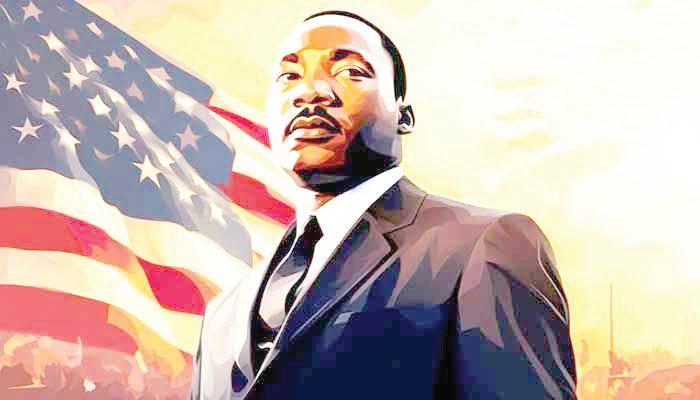
By James Patterson
Martin Luther King Jr. would have been 96 years old this year. Tragically, he was assassinated in Memphis in 1968. Jan. 15, King’s birthday, is a federal holiday to remember the importance of his life and service.
The King Holiday and Service Act of 1994 created the Martin Luther King Jr. Day of Service. It encourages Americans to volunteer to address community issues, such as educational disparities, hunger and homelessness.
King ministered not only to his church congregation but to a nation hurting from the evil of segregation. King’s campaign to end segregation continues to inspire people around the world.
Segregation was so oppressive that Blacks could be arrested for entering a public library to borrow a book or for drinking from a public white-only water fountain. By his marches, rallies, church gatherings and boycotts, King remained dedicated to ending segregation. He never let fear distract him from his mission. My favorite quote
from King is, “The function of education is to teach one to think intensively and to think critically. … Intelligence plus character — that is the goal of true education.”
Segregated school systems failed all students. King recognized that when segregation fell, public education would improve. He believed that improved educational systems would improve understanding between the races.
In the historic 1954 Supreme Court decision ending school segregation, Chief Justice Earl Warren said that
segregation was psychologically harmful to Black students. It “affects (their) hearts and minds in a way unlikely ever to be undone,” he said. Some psychologists of the era believed that segregation was demoralizing to whites, too.
Sadly, many U.S. school systems continued to enforce segregation for years after the Supreme Court decision. In some Alabama school districts, segregation continued until the early 1970s. In the mid-1970s, Georgia Gov. Jimmy Carter
Minnesota Secretary of State Steve Simon and House Democrats have asked the state’s highest court to intervene in a partisan power struggle that has roiled the start of the 2025 legislative session.
Simon, a Democrat, petitioned the Minnesota Supreme Court late Tuesday to declare that he legally remains the presiding officer in the Minnesota House, for now, and that Tuesday’s election of GOP leader Lisa Demuth as speaker was invalid. He asked the court to back his position that 68 members are needed for the quorum that must show up for the chamber to take any official actions.

House Democrats boycotted the opening day of Minnesota’s 2025 legislative session Tuesday in an effort to stop Republicans from exploiting a temporary one-seat majority to remove one of their members. But GOP representatives forged ahead anyway and named their leader as speaker in a move that Democrats vowed to challenge in court.
By Gabriela Aoun
Since
Angeles have
res across
of thousands to

There was applause as Democratic Secretary of State Steve Simon entered the chamber to convene the proceedings in accordance with state law. But the Democratic side of the House chamber was empty and only Republicans replied “present” as a clerk took the roll. Simon announced they had not reached the 68 members needed for a quorum, declared the chamber adjourned
forced
ee their homes, and destroyed more thousands of structures. Here are some of the organizations accepting support for those impacted: Children Baby2Baby: The national nonprofit provides infant and kids supplies including diapers, formula and food. It’s accepting monetary donations to deliver goods to shelters, childcare centers, schools and low-income housing sites. Boys and Girls Clubs of Malibu: The organization is offering free counseling, case management and resource referrals for area families. It’s collecting donations to provide emergency grants and, when its facilities can safely reopen, it will create an emergency relief distribution center. Project Camp: The Los Angeles-based organization runs trauma-informed popup day camps for children displaced or out of school due to natural disasters. It’s setting up multiple sites to help families impacted by the Palisades and Eaton fires, and is accepting monetary donations as well as volunteers to staff the camps.

Displaced Households GiveDirectly: The cash-relief organization is raising money to give one-time cash payments of $3-to-$4,000 to people living in impacted zip

codes who qualify for federal assistance programs like SNAP benefits. The group recently deployed a similar program for people impacted by Hurricane Helene.

Global Empowerment Mission (GEM) and bstrong: In partnership with Bethenny Frankel’s bstrong disaster relief
“Because the members of the House lacked this constitutionally required quorum on January 14, Representative Demuth has not properly been elected speaker and the House cannot transact business,” Simon’s lawyers wrote. “Until a quorum is present and a speaker is properly elected, the Secretary remains the House’s presiding officer and his role may not be usurped.”
House Democrats boycotted the opening day of the session in an
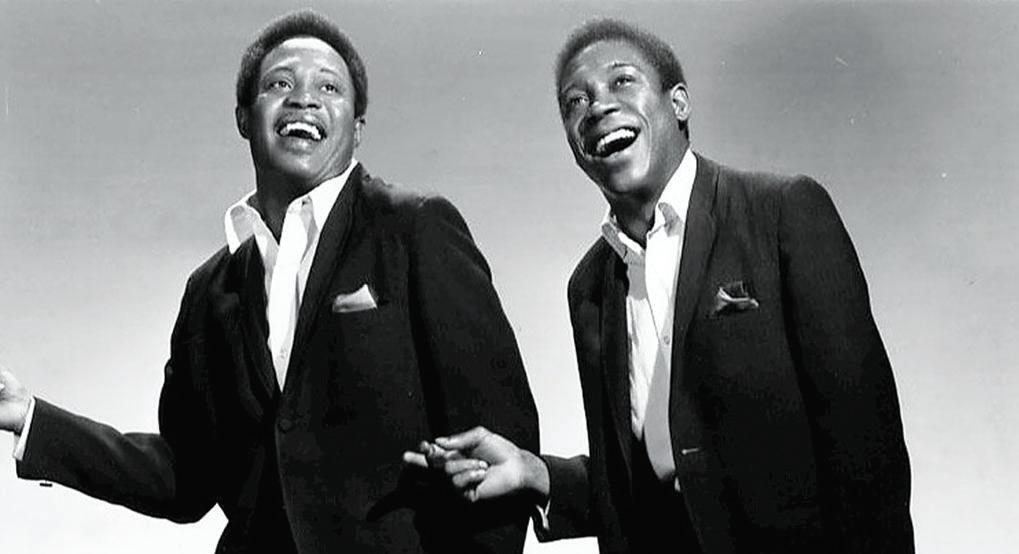
Sam Moore, an iconic American soul and R&B singer best known as one half of the legendary duo Sam & Dave, died on Jan. 10 Moore’s career spans over six decades. His unmistakable and powerful gospel-infused singing earned him a place as one of the greatest soul singers of all time. Moore was born in Miami, Florida, Moore and was initially planning to be a gospel singer. But his career took a pivotal turn when he met Dave Prater in 1961. The two formed the duo Sam & Dave. They signed with Atlantic Records after meeting Jerry Wexler and then with Stax Records in 1965 and collaborated with legendary songwriters Isaac Hayes and David Porter. The music and the sound of Sam & Dave would come to define the “Stax sound” and more broadly, the sound of soul music for a generation. Sam & Dave delivered energetic performances that featured their hits including, “Soul Man” (1967), “Hold On, I’m Comin’” (1966) and “When Something Is Wrong with My Baby” (1967). Sam & Dave’s stage
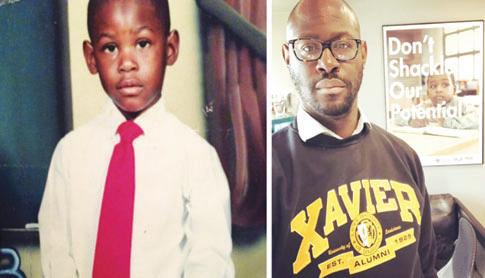

By David A. Lieb Associated Press
Artificial intelligence. Abortion. Guns. Marijuana. Minimum wages.
Name a hot topic, and chances are good there’s a new law about it taking effect in 2025 in one state or another.
Many of the laws launching in January are a result of legislation passed this year. Others stem from ballot measures approved by voters. Some face legal challenges.
Here’s a look at some of the most notable state laws taking effect:
Hollywood stars and child influencers California, home to Hollywood and some of the largest technology companies, is seeking to rein in the artificial intelligence industry and put some parameters around social media stars. New laws seek to prevent the use of digital replicas of Hollywood actors and performers without permission and allow the estates of dead performers to sue over unauthorized AI use.
Parents who profit from social media posts featuring their children will be required to set aside some earnings for their young influencers. A new law also allows children to sue their parents for failing to do so.
Social media limits
New social media restrictions in several states face court challenges.
A Florida law bans children under 14 from having social media accounts and requires parental consent for
ages 14 and 15. But enforcement is being delayed because of a lawsuit filed by two associations for online companies, with a hearing scheduled for late February.
A new Tennessee law also requires parental consent for minors to open accounts on social media. NetChoice, an industry group for online businesses, is challenging the law. Another new state law requires porn websites to verify that visitors are at least 18 years old. But the Free Speech Coalition, a trade association for the adult entertainment industry, has filed a challenge. Several new California measures aimed at combating political deepfakes are also being challenged, including one requiring large social media platforms to remove deceptive content related to elections and another allowing any individual to sue for damages over the use of AI to create fabricated images or videos in political ads.
School rules on gender In a first nationally, California will start enforcing a law prohibiting school districts from adopting policies that require staff to notify parents if their children change their gender identification. The law was a priority for Democratic lawmakers who wanted to halt such policies passed by several districts.
Abortion coverage
Many states have passed laws limiting or protecting abortion rights since the U.S. Supreme Court overturned a nationwide right to the procedure in 2022. One of the latest is the Democratic-led state of Delaware. A law there

In advance of Instagram CEO Adam Mosseri’s Congressional testimony, to illustrate the harms children face on social media, parent activists brought an “Instagrinch” to the
will require the state employee health plan and Medicaid plans for lower-income residents to cover abortions with no deductible, copayments or other cost-sharing requirements.
Gun control
A new Minnesota law prohibits guns with “binary triggers” that allow for more rapid fire, causing a weapon to fire one round when the trigger is pulled and another when it is released.
In Delaware, a law adds colleges and universities to a list of school zones where guns are prohibited, with exceptions for those working in their official capacity such as law officers and commissioned security guards.
Medical marijuana Kentucky is becoming the latest state to let people use marijuana for medical purposes.
To apply for a state medical cannabis card, people must get written certification from a
medical provider of a qualifying condition, such as cancer, multiple sclerosis, chronic pain, epilepsy, chronic nausea or post-traumatic stress disorder. Nearly four-fifths of U.S. states have now legalized medical marijuana.
Minimum wages
Minimum wage workers in more than 20 states are due to receive raises in January. The highest minimum wages will be in Washington, California and Connecticut, all of which will top $16 an hour after modest increases.
The largest increases are scheduled in Delaware, where the minimum wage will rise by $1.75 to $15 an hour, and in Nebraska, where a ballot measure approved by voters in 2022 will add $1.50 to the current minimum of $12 an hour.
Twenty other states still follow the federal minimum wage of $7.25 an hour.
Safer traveling
In Oregon, using drugs on public transit will be considered a misdemeanor crime of interfering with public transportation. While the measure worked its way through the legislature, multiple transportation officials said drug use on buses and trains, and at transit stops and stations, was making passengers and drivers feel less safe. In Missouri, law enforcement officers have spent the past 16 months issuing warnings to motorists that handheld cellphone use is illegal. Starting with the new year, penalties will kick in: a $150 fine for the first violation, progressing to $500 for third and subsequent offenses and up to 15 years imprisonment if a driver using a cellphone cause an injury or death. But police must notice a primary violation, such as speeding or weaving across lanes, to cite motorists for violating the cellphone law.
Montana is the only state that hasn’t banned texting while driving, according to the National Conference of State Legislatures.
Tax breaks
Tenants in Arizona will no longer have to pay tax on their monthly rent, thanks to the repeal of a law that had allowed cities and towns to impose such taxes. While a victory for renters, the new law is a financial loss for governments. An analysis by Arizona’s nonpartisan Joint Legislative Budget Committee estimated that $230 million would be lost in municipal tax revenue during the first full fiscal year of implementation. Meanwhile Alabama will offer tax credits to
businesses that help employees with child care costs.
Kansas is eliminating its 2% sales tax on groceries. It also is cutting individual income taxes by dropping the top tax rate, increasing a credit for child care expenses and exempting all Social Security income from taxes, among other things. Taxpayers are expected to save about $320 million a year going forward.
Voting rights An Oklahoma law expands voting privileges to people who have been convicted of felonies but had their sentences discharged or commuted, including commutations for crimes that have been reclassified from felonies to misdemeanors.
Former state Sen. George Young, an Oklahoma City Democrat, carried the bill in the Senate.
“I think it’s very important that people who have gone through trials and tribulations in their life, that we have a system that brings them back and allows them to participate as contributing citizens,” Young said. Associated Press writers Trân Nguyễn in Sacramento, California;
erson
Missouri; Gabriel Sandoval in Phoenix; Kim Chandler in Montgomery, Alabama; John Hanna in Topeka, Kansas; and Sean Murphy in Oklahoma City contributed.
We study aging family business incumbents who refuse to let go − here’s why the 2024 race felt familiar
By Nancy Forster-Holt
Clinical Associate Professor of Innovation and Entrepreneurship, URI Aging Fellows, UMaine Center on Aging Research Associate, University of Rhode Island, Cassidy Creech
Assistant Professor of Marketing and Strategy, Utah State University and James Davis
Professor of Management, Utah State University
Insight News is published weekly, every Monday by McFarlane Media Interests.
CEO/Editor-In-Chief Al McFarlane
Chief Operations Officer
Trena V. Stubbs
Publisher Batala-Ra McFarlane
Associate Editor & Associate Publisher
B.P. Ford
Art Director Sunny Thongthi Yang
Culture and
Dr. Irma McClaurin, PhD.
Jesús Chucho Garcia
Yoji Senna
Macdonald Anyanwu
Book Review Editor
W.D. Foster-Graham Sports Editor
M. Denley
Contributing Writer
Choane Annabel Kamalu
Columnist Haley Taylor Schlitz
Receptionist
Lue B. Lampley Photographer
Uchechukwu Iroegbu Roy Lewis - Washington D.C. Artist Donald Walker
Digital Producer Cooper Mitchell
Contact Us: McFarlane Media Interests, Inc. Marcus Garvey House 1815 Bryant Ave. N. Minneapolis. 55411 Ph.: (612) 588-1313 Fax: (612) 453-3853 Member: Minnesota Multicultural Media Consortium (MMMC) Minnesota Newspaper Association (MNA) National Newspaper Publishers Association (NNPA)
Postmaster: Send address changes to McFarlane Media Interests, Marcus Garvey House 1815 Bryant Avenue North, Minneapolis,




Succession planning is one of the biggest challenges family businesses face, with aging leaders often reluctant to let go of their power.
While we’re experts in familybusiness and not politics, we couldn’t help but notice striking parallels between our research and the dynamics of the 2024 election campaign. For much of the race, the leading candidates were former incumbents –both over age 75 and both resistant to steppingaside.
As the race unfolded last year with both candidates digging in their heels – well, we can’t say we were surprised.
While Joe Biden eventually ended his run after an intense pressure campaign – a decision he reportedly regrets – Donald Trump stayed in the race and campaigned his way to victory. In fact, Trump, despite being unique in many ways, acted like a typical owner of a family business. Which, of course, he is.
That’s why research into family business offers a useful lens through which to understand current events.
What research reveals about family business leaders
Family businesses are the backbone of the American economy, by some estimates representing about 90% of all U.S. enterprises. Up to 40% of family businesses at any given time are facing a succession issue, yet many avoid planning for it, opting to wait out the leader. And by 2030, more than 30% are expected to lose their leaders to retirement or death. The challenges of finding a successor are particularly significant when a leader is buoyed by what family business researchers call “heroic self-concept.”
People with a heroic self-concept – an idea that was introduced to the family business literature in 1989 – believe they have a heroic mission and derive a sense of heroic stature from their attachment to leadership roles. Examples from history include Winston Churchill and Theodore Roosevelt. From business, think Richard Branson of the Virgin companies, or Steve Jobs of Apple.
But while anyone can be a hero, not everyone has a heroic self-concept. In our recent study of more than
1,000 family business leaders – 785 men and 263 women – we found that male but not female leaders of family businesses were motivated by heroic self-concept. Our work was informed by “precarious manhood theory,” a concept from social psychology that argues manhood is a status men have to fight to achieve. It’s hard-won, easily lost and must be proven continually. Our findings suggest “letting go” is a particularly fraught issue for male leaders for precisely this reason: They’re more likely to feel a need to continually pursue a heroic mission and cultivate their heroic stature.
Trump as the family business patriarch
With his long history as a family business leader, Trump offers a natural extension of our work. His entire career has been spent cultivating a heroic stature. He consistently emphasizes his business successes, portraying himself as a dealmaker, a winner and a man with a mission. While it’s important to note that this analysis is based on our research findings and doesn’t represent a clinical evaluation, we think Trump’s reluctance to let go illustrates three key insights from family business research.
First, family business leaders are motivated by a sense of unfinished mission. Trump’s tagline, “Make America Great Again,” speaks to the heroic mission. The heroic mission is an achieved status that, according to the precarious manhood theory, must be continually reproven through risk-taking, competitive aggression and other acts of masculine swagger.
Meanwhile, family business leaders tend not to talk about leaving and eschew retirement planning, research shows. They stay in office much longer on average than nonfamily CEOs – on average by about nine more years in a privately held company and by about 20 more years than the average for the CEO of a publicly traded company. And in retirement they often yearn for lost stature. Likewise, Trump has framed his return as a necessary step in completing his unfinished business and cementing his legacy. Running

for office again allows Trump to step back into the spotlight, reclaim the narrative and reinforce his image.
Second, when older leaders hold on to power, frustrated successors become casualties. Aging leaders who are reluctant to let go can deter potential successors from joining or remaining with the business, leading to a loss of talent. Uncertainty about the timing of the succession process combined with the view that the leader may never fully give up control can leave potential successors frustrated and resentful, feeling their ambitions have been stifled.
We believe this tendency isn’t confined to family business but can be seen in U.S. government, too. When the leader is reluctant to let go, it can lead to a situation where potential successors seek opportunities elsewhere, leaving a shortage of qualified leaders. It can also prevent the introduction of fresh ideas and innovation, making it difficult for a business to adapt to change. This is the classic institutional drama that plays out in a gerontocracy. And perhaps it’s no coincidence that Democrats are struggling with similar concerns.
And yet, while this tendency can create long-term problems for an institution, insiders are often complicit. There’s little evidence that Trump’s family – or party –wants or expects him to step down. Similarly, we found that when leaders prioritize
their personal need for control and status, family members, supporters, employees and associates often respond by avoiding the issue entirely, suppressing their real views. Our research also suggests that a leader’s prolonged quest for immortality can strain family unity. Evidence of this for Trump may include the defection from the administration by prior Trump familyand team members. Our study adds nuance to a significant body of research showing that older male leaders are steeped in society’s expectations for men, which valorize “youthful” masculine behaviors and identity. That leaves them with little to guide or inspire their behavior in later life. The pressure on men to constantly prove their worth and manhood can leave them strongly attached to the status and identity they get from being a leader. The dynamics of leadership, succession and the influence of the heroic selfconcept that we study aren’t limited to the boardroom. They play out on a much larger stage, shaping the decisions and actions of individuals who hold immense power, even on national and global scales. Across the world, national leaders keep getting older.
Let’s
worked to end segregation in his state’s 159 counties.
In 1963, popular psychologist and syndicated columnist Dr. Joyce Brothers wrote a column where she identified six ways segregation harmed white kids. She said that segregation could cause white kids to lose respect for authority figures and experience repressed guilt, among other things. Segregation may also create awkward professional relationships in workplaces. Brothers broadened the concerns expressed in 1954 by Chief Justice Warren. She believed that segregation was psychologically damaging to all students. In the excellent book “Combined Destinies: Whites and Blacks Confronting Racism” (2013, University of Nebraska Press), psychotherapists Ann Todd Jealous and Caroline T. Haskell edited stories from individuals
MN Democrats
From 3
to unseat one Democrat and to advance the GOP agenda.
Democrats also petitioned the Supreme Court late Tuesday, asking the high court to prohibit Republican lawmakers from conducting any business until at least 68 members are present, and declare than any actions taken in the meantime are “without lawful authority and are therefore null and void.”
Demuth called
the lawsuits an attack on the constitutional separation of powers between the legislative and executive branches.
“Secretary Simon has no authority as a member of the executive branch over proceedings in the House, and his role is strictly ceremonial in nature,” Demuth said in a statement.
It wasn’t immediately clear when the Supreme Court might rule. The justices hadn’t scheduled oral arguments and Republicans had not filed responses by late morning Wednesday.
House Republicans planned to convene a floor session at noon Wednesday,
was the legal winner and rejected a GOP effort to force a special election in the swing district that they potentially could have won.
even as Democrats planned to continue the boycott for a second day. Republicans contend that only 67 members are needed for a quorum because one seat is empty.
The November election resulted in a House tied at 67-67, and top leaders from both parties started to work out a power-sharing agreement on the assumption that they would be evenly split this year. But a judge late last month declared that a newly elected Democrat didn’t really live in his district. That gave Republicans a temporary 67-66 majority until a special election can take place Jan. 28. Since the district is heavily Democratic, the election
who expressed remorse for behaviors, such as unearned privilege, that may have arisen from segregation’s lasting effect on them and their families. It is worthwhile to read and study the courageous personal accounts in this brief 197-page book. While the psychological damage of segregation may be longlasting, the healing power of King’s lessons, sermons and life experience is also longlasting. Church services offer an opportunity to reflect on King’s work. Libraries, museums and schools are other places that offer programs designed for the King holiday. Community food banks offer rewarding volunteer opportunities.
is expected to restore the tie. Democrats are especially worried because Republicans have threatened to use their two-week majority to refuse to seat Democratic Rep. Brad Tabke, of Shakopee. He won by only 14 votes in a different race, where local officials said 20 ballots were accidentally destroyed without being counted. A court declared Tabke the legal winner and rejected a GOP effort to force a special election in his swing district.
Efforts to revive a power-sharing deal failed. The top House Democrat, Melissa Hortman, of Brooklyn Park, said at a news conference
Celebrate the Rev. Martin Luther King Jr. holiday with family and friends. It is a time to rejoice with one another on the progress made to create a spirit of unity and forgiveness across the nation. This article is from the Speakin’ Out News Online Newspaper: https:// speakinoutweeklynews. net/2025/01/15/mlk-educatedour-nation/
Tuesday that Demuth would not commit in final negotiations to letting Tabke keep his seat, even though she offered a deal that would have allowed Demuth to serve as speaker all session.
State law says the secretary of state shall call the House to order at the start of a legislative session and preside until a speaker is elected. But the Democratic side of the chamber was empty when Simon convened the body. After a clerk took attendance and only the 67 GOP members answered “present,” Simon declared that they lacked a quorum of 68 and adjourned. But Republicans stayed in their seats and elected Demuth as speaker — a move that Democrats denounced as an “unlawful sham with no legal authority.”
This is the first time the Minnesota Legislature has faced such a boycott, but similar stalling tactics have been used in other states. In contrast to the House, the Minnesota Senate convened calmly Tuesday. The Senate is tied 33-33 pending a Jan. 28 special election to fill the seat of a deceased senator. That’s expected to restore the Democrats’ 34-33 majority. But Senate leaders quietly reached a power-sharing deal that includes co-presiding officers from both parties.
From 3 and left.
But Republicans stayed in their seats, saying that with 67 members present they had a quorum. They then voted to elect their top member, former Minority Leader Lisa Demuth, of Cold Spring, as speaker, a move that Democrats immediately denounced as an “unlawful sham with no legal authority.”
The key sticking point is whether Republicans will make good on a threat to refuse to seat incumbent Democratic Rep. Brad Tabke, of Shakopee, who won reelection by 14 votes even after local elections officials said 20 ballots were accidentally destroyed without being counted. A judge earlier Tuesday declared that Tabke
Moore Moore
The House came out of the November election tied 67-67, and top leaders from both parties started to work out a power-sharing agreement that presumed a tie. But a different judge late last month declared that a newly elected Democrat in another, heavily Democratic district, didn’t really live there. That gave the GOP a 67-66 majority until a special election can take place there in two weeks. Republicans then declared their intent to take full advantage until the tie is restored and threatened to refuse to seat Tabke even if they lost the court case.
The top House Democrat, former Speaker Melissa Hortman, of Brooklyn Park, said at a news conference in Tabke’s district in Shakopee that Republicans would not
commit in final negotiations to letting Tabke keep his seat. Hortman said she had proposed letting Demuth become speaker for the full session but otherwise revert to an earlier power-sharing agreement, assuming that the special election restores the tie. But she said Demuth would not rule out taking action to move against Tabke at some point. Demuth vowed in an acceptance speech to “work tirelessly” to foster a “culture of respect and civility” in the House, but she didn’t directly mention the boycott.
“We owe it to the people that we represent to debate passionately, but we also owe them the respect of agreeing that sometimes we do disagree,” she said. “So let’s focus on what unites us.”
Republicans then adjourned until Wednesday. The No. 2 Republican leader, Rep. Harry Niska, of Ramsey, told reporters afterward that
Simon, as a member of the executive branch, is barred by the constitutional separation of powers from controlling the work of the House.
But House Democrats said the GOP actions were illegal and that Demuth is not speaker. Simon said in a statement that he intends to ask the Minnesota Supreme Court to rule that the GOP moves were not legitimate.
“I anticipate that the courts will provide clarity, both on that issue and on the understanding that the person who holds the Secretary of State’s office is the presiding officer until a Speaker is legally elected — an event which has not yet occurred,” Simon said. It’s unclear how long the courts might take to resolve the dispute.
This is the first time the Minnesota Legislature has faced such a boycott, but similar stalling tactics have been used elsewhere.
Democrats in neighboring Wisconsin went into hiding in 2011 in a standoff with majority Republicans over union rights for public employees. Oregon Republicans staged multiple walkouts in recent years, including a record six-week walkout in 2023 over bills on abortion, gender-affirming care and gun rights. The top Democrat in the Michigan House last month ordered absent members back and barred the doors after a Democrat joined Republicans in skipping out.
The high-stakes poker in the Minnesota House contrasts with the calm that prevailed Tuesday in the state Senate, which is tied 33-33 pending a Jan. 28 special election to fill the seat of a deceased senator. That’s expected to restore the Democrats’ 34-33 majority.
Senate leaders quietly reached a power-sharing deal that includes co-presiding officers from both parties.
The polarization in the House raises interesting and unresolved legal questions, said David Schultz, professor of political science at Hamline University in St. Paul, Minnesota.
“We are in uncharted legal territory,” Schultz said, because language in the state’s constitution and laws is ambiguous and there aren’t any definitive answers.
It’s also not clear whether the state’s courts can intervene to resolve the infighting of the legislative branch of government, Schultz said, or whether Republicans would have to abide by a judicial opinion if they did so.
“It’s starting off intensely ugly,” Schultz said, “and it’s not going to bode well for the rest of the session.” Associated Press reporter Hannah Fingerhut contributed to this story from Des Moines, Iowa.
presence alone was a force that could not go unnoticed. When matched with their songs and music, much of which are still considered classic soul and R&B, they were unforgettable. Moore’s soaring tenor and Prater’s deep baritone, made their act unforgettable. Sam & Dave were inducted into the Rock and Roll Hall of Fame in 1992. In addition to their voices, Sam & Dave had a back up band that would also become legend. Many of the recordings made by Sam & Dave featured Hayes on piano and Booker T and the MGs and The Memphis Horns as the backing musicians. The final performance of Sam & Dave was on December 31, 1981 in San Francisco. On April 9, 1988, Dave Prater was killed in a car accident in Georgia. Moore went on to receive numerous accolades throughout his career, including a Grammy Lifetime Achievement Award in 2019, induction into the Grammy Hall of Fame (for “Soul Man”), and the National Medal of Arts which was given by President George W. Bush in 2002. Sam Moore remains active in music and philanthropy. He is celebrated not only for his contributions to soul music but also for his efforts to preserve the legacy of classic R&B and gospel traditions. Moore is also an advocate for musicians’ rights and a supporter of music education initiatives. His enduring voice and passion continue to inspire generations of artists and fans worldwide. Lauren Victoria Burke is an independent investigative journalist and the publisher of Black Virginia News. She is a political analyst who appears regularly on #RolandMartinUnfiltered and speaks on Crisis Comms on YouTube @ LaurenVictoriaBurke. She can be contacted at LBurke007@ gmail.com and on twitter at @ LVBurke
in. No pressure to respond.”
fund, GEM is distributing cash cards to evacuated residents to help with immediate needs like accommodation, gas and food. The organizations are accepting cash donations.
GoFundMe.org:
The crowdfunding platform’s nonprofit arm will use its Wildfire Recovery Fund to give $1,000 emergency grants to verified households that have lost homes, loved ones or property.
Instacart: The food delivery platform’s Community Carts platform allows you to choose a YMCA to support and to buy directly from its list of needed items.
3
From 3 Tampa for two years, and these were the two years I attended Head Start. Thereafter, we returned to where I was born and raised, in Pascagoula, Mississippi.
First responders and volunteers California Fire Foundation: The foundation is supporting both firefighters responding to the Los Angeles fires as well as people affected. Los Angeles Fire Department Foundation: It is raising funds to supply its first responders with tools and supplies.
Watch Duty: The nonprofit service provides realtime updates on wildfire activity, evacuations, shelters and more via its free app. The organization relies on donations and a team of 200 volunteers, gathering and vetting information from radio scanners and official sources, to do its work.
Essential workers
Inclusive Action for the City: The L.A. organization is collecting donations for
Los Angeles Regional Food Bank: The food bank is supporting a network of more than 600 partner agencies to make sure impacted households are fed. It’s accepting cash donations, food donations at two sites, and volunteers.
Do you have any memories from your time in Head Start? Favorite activities, classmates, teachers? I remember my class was always out and about — going on field trips to Busch Gardens to see the animals, going to the park, taking trips to the grocery store, and learning about fruits and vegetables. I also remember the times when doctors would visit us and check our eyes, ears and hearts, and I’ll never forget the day a giant toothbrush walked into our classroom, and we learned about the importance of dental hygiene. I still remember a few of my classmates’ names, though this was 30 years ago. I can also still picture the uniform we had to wear on field trip days — it was a red shirt with an image of a panda bear hugging a bamboo tree, with black shorts or pants, and a black visor. And for the strangest reason, I remember that my classmates and I had to learn the song “Shower Me With Your Love” by an R&B
its cash assistance program, which gives $500 to outdoor workers such as street vendors and landscapers living in the impacted areas who may lost work due to the fires.
National Domestic Workers Alliance: Its ‘ We Care: Domestic Worker Relief Fund ‘ will support on-theground organizations helping domestic workers impacted by this disaster. Aid will include emergency financial assistance, basic supplies and longterm recovery support.
Animals
Pasadena Humane Society: The animal rescue has taken in hundreds of animals due to evacuations, including some with burns and injuries. Its officers are also on the ground finding animals that need help. It is accepting monetary donations as well as purchased goods from its Amazon wishlist.
American Humane Society: Its emergency rescue team is transporting shelter animals
group named “Surface,” as part of our graduation ceremony. The few times I’ve heard that song, I immediately think of my time in Head Start. Head Start was also one of the very, very few instances from my pre-K to 12th-grade journey in which I was taught by teachers who looked like me. I think having such vivid memories of my experiences in Head Start is a testament to just how positively impactful the program was for me.
How do you think Head Start impacted your later school years? Or even your goals and career accomplishments beyond school? Head Start directly impacted my professional
to locations in Washington and Oregon to make space for displaced pets. It’s accepting monetary donations.
Longterm recovery California Community Foundation: The L.A.-based foundation’s Wildfire Recovery Fund will address longterm recovery needs like temporary housing, rebuilding homes, mental health and medical care. It also provides updated equipment to firefighters and helps rebuild emergency communications systems. It is accepting cash donations and offers employee matching for companies, too.
HabitatLA: Its ReBUILD LA fund will be used to help rebuild homes, offer rental and mortgage assistance and temporary housing assistance, and supply home furnishings.
Team Rubicon and Samaritan’s Purse: Both organizations will assist people who lost homes once
trajectory. Because of the program, I’ve always wanted to serve children in some capacity. Before practicing children’s rights and disability law, I was a public-school kindergarten teacher!
What did your educational and career journey that led to your current position look like?
After graduating from high school in Mississippi, I attended Xavier University of Louisiana, a historically Black college located in New Orleans, where I majored in literature and double minored in history and political science. I then received a master’s degree in education from Harvard University. I then taught kindergarten, and, thereafter,
cleanup begins. Team Rubicon plans to help clear debris and Samaritan’s Purse will aid people sifting through debris to find personal belongings that may have survived the fire.
People you know
Friends and family who lost property may need cash, temporary housing, or emotional support. It’s important to reach out delicately, without expectations for how or whether they will respond, said Dr. Adrienne Heinz, clinical research psychologist at the Department of Veterans Affairs National Center for PTSD. Here are her tips:
1. It can be helpful to check in. It can be comforting to know that others are thinking about you and want to lend their support. An example: “I’m so sorry for what has happened to your community. There aren’t really words to describe how sad this is. Can I send your family a meal tonight? I’m here for you and will keep checking
returned to New Orleans to attend law school at Loyola University. While in law school, I took courses in civil rights and child advocacy. I spent six years as a private practice attorney at multidisciplinary law firms in New Orleans, and then, in 2018, I returned to my original passion for serving children as an attorney representing their interests.
Victor, what advice do you have for current Head Start children and families?
2. Offer concrete ways of helping like lodging, gift cards, meals, childcare.
3. Give them grace. They may not be able to respond for a number of reasons.
4. Refrain from phrases that minimize or invalidate their experience, like “At least you’re alive,” or “Everything happens for a reason.” Just because someone didn’t lose their home, doesn’t mean they aren’t hurting. The entire community is still enduring a stressful and likely traumatic event.
Associated Press coverage of philanthropy and nonprofits receives support through the AP’s collaboration with The Conversation US, with funding from Lilly Endowment Inc. The AP is solely responsible for this content. For all of AP’s philanthropy coverage, visit https://apnews.com/hub/ philanthropy.
Know that your child’s involvement in Head Start will be the best investment in their educational experience that you can offer them. The holistic approach to learning — physical care for self, care for your peers, and learning how to exist in the world around you, is an approach that I, as a former early childhood educator, can say is unique. I’m now the father of two daughters and I always say that I wish that they were able to have received a Head Start education like I did.
Anything else you would like to share with the Head Start community? I always say that I went from “Head Start to HBCU to Harvard.” I’m eternally grateful for Head Start because it shaped me into someone who aspires to be a fierce advocate for marginalized children.
By Sharon Pierce MinnPost
According to the U.S. Bureau of Labor Statistics, individuals with a college degree on average earn more than those with only a high school diploma, and this earnings gap continues to widen. Yet for many prospective students, their dream of earning a college degree is overshadowed by the fear of student loan debt. Rising tuition costs are becoming their most challenging barrier. At a time of growing skepticism about the value of higher education, it’s important to recognize the role of the colleges and universities of Minnesota State in meeting this challenge. We are preparing students for successful careers while minimizing their financial burden by offering
the lowest tuition and fees in the state. Driven by the desire to build better lives for themselves and their families, our students are pursuing their education while balancing work, family responsibilities and other obligations. They deserve our support. Fortunately, there are important programs making a real difference for these students. This fall, 500 Minneapolis College students benefited from the North Star Promise Scholarship, which covers tuition costs for eligible Minnesota students from families earning less than $80,000 annually. Also, Workforce Development Scholarships are helping students reduce their expenses while gaining skills for in-demand careers. As industries evolve, from healthcare to advanced manufacturing, the demand for
a well-trained workforce grows. The colleges and universities of Minnesota State are positioned to meet this demand by partnering with local businesses and tailoring our programs to regional economic priorities. This investment is about more than individual students. It’s about our state’s economic development; it’s about our communities. The return on this investment will be in the form of welders, machinists, nurses, dental technicians, entrepreneurs, educators, HVACR technicians and other trained professionals to fill critical gaps in Minnesota’s workforce. Our students will shape our future. It’s time to recognize their value and strengthen our collective commitment to higher education.
Sharon Pierce is the president of Minneapolis College

By Todd L. Ely Associate Professor of Public Administration; Director, Center for Local Government, University of Colorado Denver
Campus protests expressing solidarity with the Palestinian people and objecting to Israel’s military campaign in Gaza include many calls for universities and colleges to divest – a word that basically means sell – any of their assets that are tied to Israel or connected to companies supplying weapons and technology to Israel’s government. The Conversation U.S. asked Todd L. Ely, a University of Colorado Denver public administration scholar, to explain the challenges of meeting this demand. What are endowments?
Endowments are pools of assets that originally come from donations. Nonprofits and some public organizations invest those assets, which grow over time, and disburse a small percentage of them annually to support their missions. Nearly all nonprofit colleges and universities have endowments, as do hundreds of public institutions of higher education – some through associated nonprofit foundations.
U.S. college and university endowments had around US$1 trillion in assets as of the middle of 2021 – the most recent comprehensive data available.
This wealth is highly concentrated. Nearly half these assets belonged to the 20 largest endowments in 2021. Endowments worth $40 million or less are more typical and around 95% colleges and
universities have less than $1 billion in their endowments.
Endowment managers generally see making money as their primary objective and large amounts of these assets are subject to restrictions due to donors’ preferences.
Columbia University’s $13.6 billion endowment, for example, as of 2023 was split among more than 6,200 different funds and about two-thirds of the assets in its endowment were subject to donor-related limitations.
Because colleges and universities aim to preserve their endowments to support their operations for the foreseeable future, they typically spend about 5% of those assets per year on student financial aid and assorted programs to supplement what they can afford from their other revenue – primarily tuition, fees for housing and food, as well as state funding for public institutions. Columbia’s endowment, for example, disbursed $679 million during its 2023 fiscal year.
Many protesters have said they object to their tuition dollars being in an endowment with financial ties to Israel. But that’s not how endowments work. Universities and colleges typically spend all the money they receive from tuition on core operations. They supplement those funds with revenue from other sources – including their endowments.
How much information about endowments is made public?
Because it’s unclear how much of these assets are tied to Israeli companies or the Israeli military, many protesters are calling on their colleges and universities to disclose more information about what’s in their endowments.

While universities and colleges typically release their audited financial statements annually, details about their endowments’ holdings are hard to find for several reasons.
First, professionally managed investments change so frequently that what’s in an endowment is a moving target. Periodic reporting at best reflects a historical snapshot. Second, higher education endowments are complex. Timely and detailed reporting of investments, while desirable for oversight, can reveal the secret proprietary strategies of endowments and their investments, including alternative investments like hedge funds.
Third, colleges and universities are increasingly hiring outside asset managers
and hedge funds to manage their endowments. Agreeing to keep quiet about those investments may be required due to the proprietary nature of those deals.
Some information about endowments does show up in 990 forms, which are informational returns charities file annually with the Internal Revenue Service and are made public. That form’s Schedule D includes the endowment’s size, its administrative expenses and the general restrictions it faces.
Although the forms require the disclosure of “Activities Outside the United States” in Schedule F, the highest level of detail required is the region of those investments. In other words, any investments in Israeli companies might be lumped together with investments in corporations based in Qatar or Lebanon.

Are there legal obstacles?
Universities and colleges might not always be free to divest their endowments.
When it comes to severing ties with Israel, laws in at least 38 states discourage such actions by public universities and sometimes include banning that kind of divestment by outlawing adherence to the Boycott, Divestment and Sanctions (BDS) movement that has sought to pressure Israel for nearly 20 years.
Other state laws more broadly limit the use of environmental, social and governance (ESG) investment practices by public institutions.
For example, officials at The Ohio State University have cited their state’s laws when they’ve told protesters they can’t sever ties with Israel.
There is also a law that governs the investment and use of funds by nonprofits in nearly all states: the Uniform Prudent Management of Institutional Funds Act. This measure mandates a “prudent” approach to investment that can be interpreted as attempting to maximize an endowment’s growth.
However, some divestment advocates argue that colleges and universities have a moral duty to divest in certain cases based on those same laws – even if it means an endowment will potentially grow more slowly.
Is divestment from Israel feasible?
To be sure, many colleges and universities have agreed in recent years to students’ demands for divestment from industries that include tobacco, fossil fuels, private prisons and firearms. About 40 years ago, hundreds of schools divested from companies doing business in South Africa before the fall of its apartheid government.
But it would be hard to determine what specific assets would need to be sold off and then avoided for the foreseeable future if today’s protesters were to prevail.
No matter the focus of these campaigns, divestment takes political will, time and effort to implement. It also increases transaction costs, reduces access to certain investment products, and can take a long time due to how higher ed endowments are invested.
That’s partly because endowments generally don’t just include large amounts of stocks and bonds. To reduce risks, they are increasingly invested in mutual funds and other assets that are made up of many different securities. Outsourcing management of portions of their portfolios to private equity firms leads to other complications.
“The University has no discretion as to withdrawal of its investment in private equity and real asset funds,” Columbia University noted in its 2023 audited financial statements. “Distributions are made when sales of assets are made within the funds. In general, the remaining life of these private equity and real asset funds is up to 12 years.”
There’s yet another concern for colleges and universities: many of their biggest donors have made it clear that they oppose
divestment from Israel. In some cases, those donors have said they’ll stop giving to schools that sever ties with Israel as the protesters demand. Does divestment work? Whether divestment works probably depends on its advocates’ goals.
If they want to impose meaningful financial losses on specific companies, industries or countries, research indicates that they’re bound to fail for several reasons. While many college and university endowments are large by most standards, they aren’t necessarily big enough to move financial markets, especially since their investments are diversified. Also, when a university does own shares in a targeted company, selling that stock simply transfers the ownership to a buyer who is less concerned about the social considerations. Maintaining ownership and taking a more active investor advocacy role might be an alternative to divestment.
But if the goal is to raise awareness about a cause, then divestment may make a difference –even if it’s hard to measure.
On May 9, 2024, Union Theological Seminary became the first U.S. higher education institution to announce that it would divest its endowment from investments tied to Israel’s military operations. The seminary’s board used this occasion to emphasize that it strives to “not financially support damaging and immoral investments” –making it a good example of the symbolic rather than financial purposes of divestment efforts. How can colleges and universities heed student demands?
A few colleges and universities have found ways to engage productively with protesters, sometimes even resulting in the amicable end of encampments. Increasing engagement opportunities for students and the broader academic community around endowments and other institutional investments may provide an outlet to address current and future disputes. Brown University, Northwestern University and the University of Minnesota appear to be taking this approach. Some college and universities have promised to consider divestment demands at a future date and disclose more information about what’s in their endowments. Making those pledges has helped keep the peace while guaranteeing that this issue will remain on the agenda in the 2024-2025 academic year. This article was updated on May 10, 2024, with Union Theological Seminary’s divestment announcement and on May 15 to clarify the restrictions in most states that could limit the divestment of assets tied to Israel. Todd L. Ely is affiliated with the National Center on Nonprofit Enterprise’s Research Advisory Network. This article is republished from The Conversation under a Creative Commons license.
By Sheila Regan MinnPost
Remember in the first few months of 2020, when flapper attire and Gatsby parties were all the rage? COVID-19 put a swift halt to the trend, but as the 100 year anniversary of F. Scott Fitzgerald publishing “The Great Gatsby” approaches, we’ll be seeing some “Jazz Age” stylings around the Twin Cities.
For one thing, Friends of the St. Paul Public Library is planning a whole year of programming in partnership with different organizations. This year, there will be an exhibition on view at the Minnesota Historical Society’s Gale Family Library and Minneapolis Institute of Art, plus talks, readings, performances, and walking tours – you can see the full line-up here.
First up is a book launch and conversation for “F Scott Fitzgerald: A Composite Biography,” at the Arlington Hills Community Center, 1200 Payne Ave. It’s a celebration for the multi-author biography published by the University of Minnesota Press published in July of 2024. Editors Niklas Salmose and David Rennie will be there, along with two of the book’s contributors – David Page, a retired writing instructor from Inver Hills who has worked on numerous Fitzgeraldrelated writing and video projects and Ross Tangedal, an associate professor of English and director of Cornerstone Press at the University of Wisconsin-Stevens Point.
I had a chance to read this book over the summer, and I enjoyed digging into the author’s life chapter by chapter. Because each author takes on a different period from Fitzgerald’s life, you get different angles and perspectives as you go through the book. In Tangedal’s chapter, he explores the modernist architecture of Buffalo, N.Y. as possibly an impactful early memory for young Fitzgerald. Page, meanwhile, focuses on the author’s formative years in St. Paul. Some of the writers lean toward literary analysis, others touch on philosophy, popular culture, as well well as broader trends in American society.
In the introduction, the editors write that the seeds for the book began back in 2018, when scholars gathered for the 18th International Ernest Hemingway Conference, relaxing on a very hot day under a tree, sipping rosé. The group decided to take a plural


approach to the new endeavor, inspired by Fitzgerald’s own quote from his “Notebooks,” that an author is “too many people, if he’s any good.” I first read “The Great Gatsby” in high school in my English class. I remember a discussion during that year about which book we thought was the “Great American Novel.” Our class was eager to suss it out, and to find out the opinion of our teacher. Since the day Ms. Reed admitted she felt “Gatsby” deserved the honor, I’ve held the book with some reverence, though I don’t know how valuable picking one “Great American Novel” really is. There was a lot in “A Composite Biography” that was news to me, and I’m guessing you will find tidbits that you find surprising as well. Here are a few details I learned reading the book:
F. Scott Fitzgerald was named after Francis Scott Key, who wrote the text for “The StarSpangled Banner”
It turns out Fitzgerald was a distant cousin of Key, and was also related to Mary Surratt, who was hanged in 1865 for conspiring to assassinate Abraham Lincoln, according to writer Helen Turner.
Fitzgerald’s father, Edward Fitzgerald, bragged about aiding Confederate spies
The elder Fitzgerald was from Maryland, a slave state that didn’t secede from the Union, and his family had been “deeply embedded” in Southern culture for generations before the war, Turner tells us. Throughout his young life, Scott heard elaborate stories about his father ferrying spies across the Potomac river and other acts of allegiance toward the Southern side.
He kept a detailed ledger of his life
In about 1919 or 1920, Fitzgerald began a ledger where he recorded every piece of fiction he published – noting both American and British magazine publishers and American and British book publishers of the same stories. He also kept track of money he earned from his writings, his transactions with Hollywood producers, and his wife Zelda Fitzgerald’s earnings. Perhaps most interesting, he has an autobiography section, beginning with the year he was born. That was in part sourced from his mother’s baby book and later from his own memories. You can actually see

a pdf and transcription of the ledger here.
Fitzgerald’s ledger reveals the way white supremacy culture played out for the author from an early age A chapter focused on Fitzgerald’s life in 1902 and 1903 by Joel Kabot (a speechwriter for U.S. Sen. Chris Coons), draws on the author’s autobiography to look at two encounters with African American boys. In 1902, Fitzgerald visited Maryland (his family was living in upstate New York at the time), and mentions that he made friends with an African American child, “name forgotten – name Ambrose,” Fitzgerald wrote. A year later, he returned to Maryland for another visit, and reports that he “turned on his two Black friends Roscoe and Forrest,” and describes along with another boy tying them up. The ugly incident is worth noting when thinking about Fitzgerald’s later writing. In “The Great Gatsby,” Fitzgerald confronts racism directly, painting the racist character Tom in a negative light. On the other hand, his early story, “The Offshore Pirate,” is steeped in cringe-worthy stereotypes of its supporting Black characters.
Fitzgerald’s short story, “The Ice Palace,” was partially inspired by the St. Paul Winter Carnival In Page’s chapter about Fitzgerald living in St. Paul in 1908 and 1909, he mentions that an early muse of Fitzgerald’s named Violet Stockton had a maternal grandfather who laid the

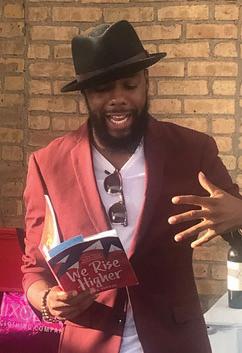





cornerstone of the first Ice Palace in 1866. According to Page, the ice palace of the Winter Carnival inspired Fitzgerald’s story of the same name.
Fitzgerald took dancing lessons at a place called the Ramalay School of Dance on Grand Avenue
Page briefly mentions Fitzgerald was invited by the mother of one of his friends to take dance lessons and would spend long Saturday afternoons at the school, learning from Professor William H. Baker, who was also a bartender at the White Bear Yacht Club.
Fitzgerald’s first publication was in St. Paul Academy’s student magazine, “Now and Then”
The story was a murder mystery about a newspaper reporter.
Garrison Keillor may have been wrong about Fitzgerald’s feelings toward St. Paul In Walter Raubicheck’s chapter about the years 1920 and 1920, he cites a speech “Prairie Home Companion” humorist Garrison Keillor gave in 2002 saying that Fitzgerald didn’t like St. Paul very much. Raubicheck writes this wasn’t entirely true.
“The Midwest for Fitzgerald was the embodiment of an America older and more rooted than the one that created modern New York,” he writes, noting that in “The Great Gatsby,” narrator Nick Carraway returns to the midwest disgusted by the moral decay of the east coast.
He never graduated from college
Reading David Rennie’s and James L. W. West III’s chapters about Fitzgerald’s time at Princeton, I kept thinking about Jason Schwartzman’s character, Max Fischer, in the movie “Rushmore.” Fitzgerald excelled at extra-curricular activities, but his poor academic performance made his status at the college precarious, and he’d often be barred from performing with the school’s theatrical club, which produced his works. He ultimately dropped out and enlisted in the army during World War I.
He and Zelda once were banned from the White Bear Yacht Club After Fitzgerald published his smash hit, “This Side of Paradise” in 1920, he and Zelda partied like there was no tomorrow in New York City, eventually getting kicked out of the Commodore Hotel.
In 1922, the couple moved to St. Paul, in part because Zelda was pregnant. The couple managed to be excluded from the White Bear Yacht Club, still in existence today.
He saw Zelda’s life as his material Before I read “A Composite Biography,” I had heard about Zelda’s famous “review” of “The Beautiful and the Damned,” Fitzgerald’s second novel, where she jokes that her husband stole her diary and letters and plagiarized them. It’s a tongue in cheek piece, but it turns out he did borrow liberally from his wife’s life throughout their relationship.
But it goes farther. It’s not just that Fitzgerald was appropriating aspects of Zelda’s life in his writing – he would get sore when she used it herself for her own writing projects. The conflict reached a fever pitch while Fitzgerald was writing “Tender is the Night,” a novel inspired in part by Zelda’s experiences in mental health institutions. Zelda, meanwhile, secretly sent her own autobiographical novel to editor Maxwell Perkins because she feared her husband’s wrath. Scott Donaldson, in his chapter about 1932-1933, even includes a sadistic private note Fitzgerald wrote that seems to be a plot borrowed from the play “Gaslight,” to drive Zelda to insanity, though it seems he never acted on the plan. Ernest Hemingway lost his patience for Fitzgerald’s literary critique Things started out swimmingly between the two authors, with Fitzgerald admiring the younger author’s work and introducing him to his editor, Perkins. Ermest Hemingway partially took Fitzgerald’s advice on his novel, “The Sun Also Rises,” according to Jade Broughton Adams, though he told Perkins the cuts Fitzgerald suggested were his own idea. Later, when Fitzgerald wrote a detailed ninepage report on “A Farewell to Arms,” Hemingway “derided” his former mentor, according to Delesalle-Nancey. Soon after, Fitzgerald forgot to call time while acting as timekeeper for a boxing match between Hemingway and Canadian author Morley Callaghan, and their friendship was damaged.
“The Crack-Up” was underappreciated
“The Crack-Up” was first published as a series of essays in Esquire Magazine in 1936 and later released as a collection posthumously. While the essays have since earned praise as being one of Fitzgerald’s greatest achievements, they were universally panned at the time. Among the largest critics? Hemingway, according to Elisabeth Bouzonviller. This is just a sample of the rich material in this extensive, intriguing biography. If you want to hear more from some of the authors, head to the Gatsby At 100 series opening event on Saturday, Jan. 18 at noon – both in person and live stream (free). More information: https://thefriends. org/fitzgerald/.











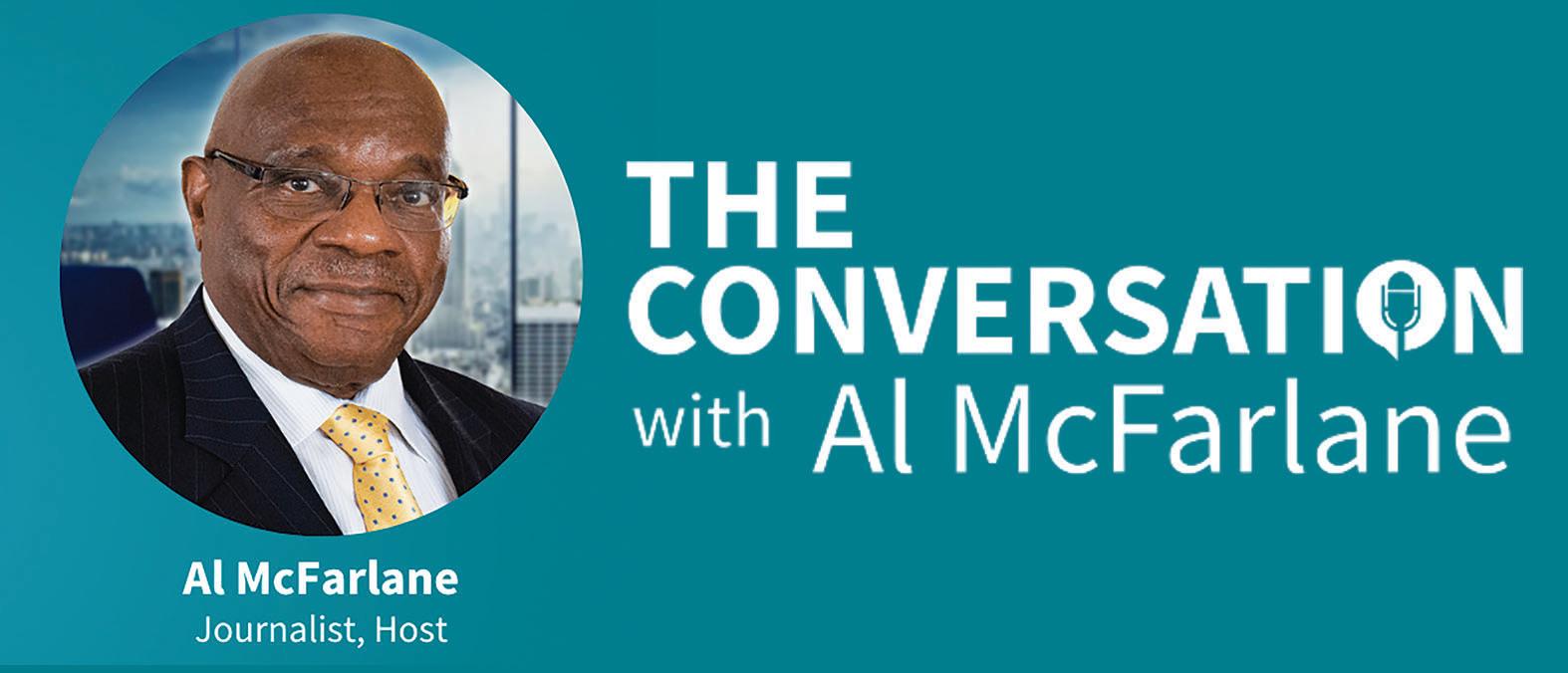

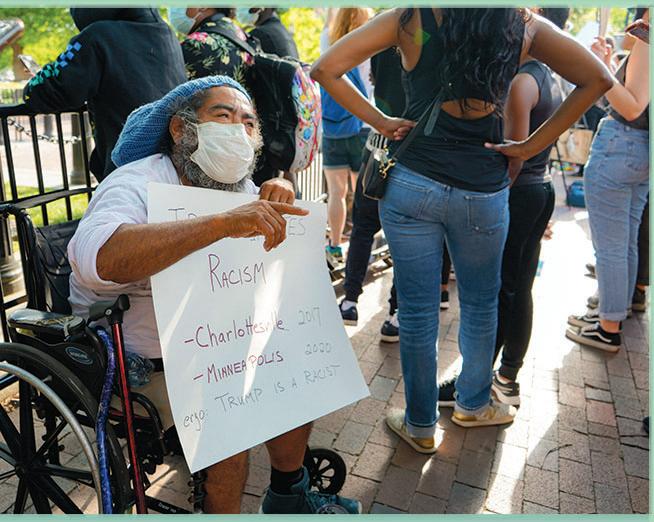








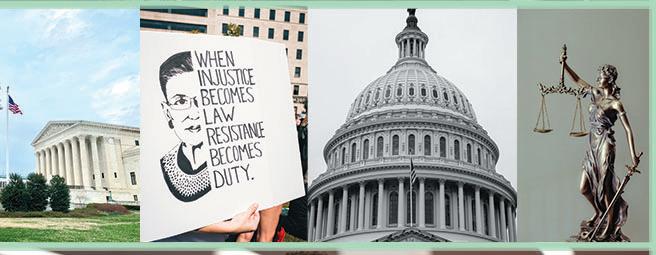





By W.D. Foster-Graham Book Review Editor
A Faith-Based Study Guide and Fitness Plan for Life
By Ron Henderson
In our faith journey, we often discuss our spiritual and mental health. The thing is, our physical health and fitness goes hand in hand with them, but far too many of us neglect it, or we start a fitness program but don’t sustain it. Think of one of the more popular New Year’s resolutions people make— getting into shape. That being said, I have the honor of sharing fitness king Ron Henderson’s Balancing the Scales: A FaithBased Study Guide and Fitness Plan for Life.
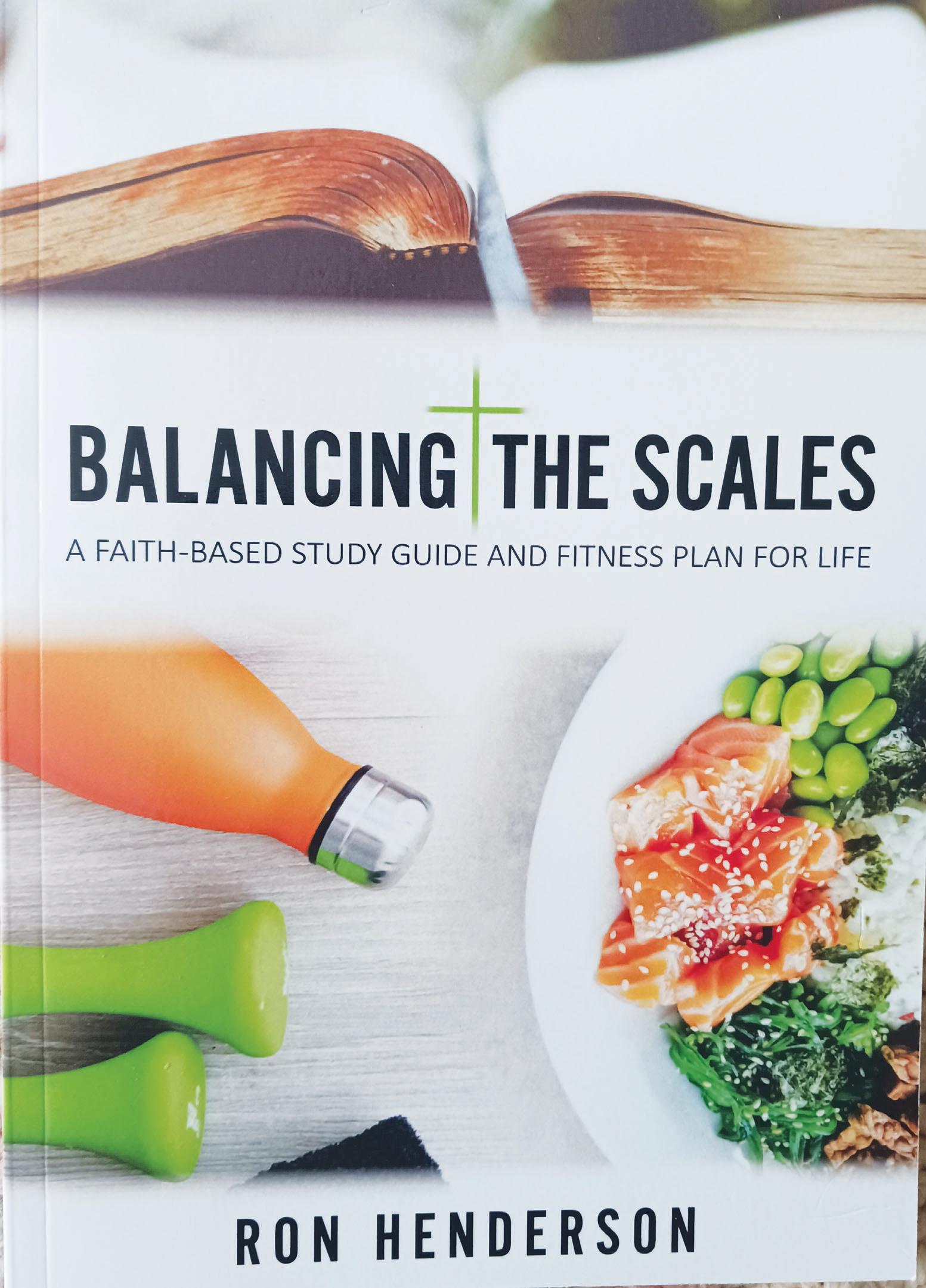
Balancing the Scales incorporates physical fitness in tandem with our spiritual life, the trinity of mind, body, and spirit. Without surrender to God and walking in faith, one will not have full physical fitness. Our prayer life and thought life are an integral part of physical fitness, and included in this fitness plan are power verses from the Scriptures. One of them is the following from 1 Corinthians 6:19: “Or do you not know that your body is a temple of the Holy Spirit who is in you, whom you have from God, and that you are not your own?” Henderson makes it clear that before embarking on a fitness program and a change in diet that you consult with your physician. In the process of an exercise program, the chapters include space to document and track one’s progress as well as take inventory of ourselves, since doing so is more likely to keep a person on a fitness program in the long run. In addition to making time for exercise and an increase in our prayer life, Henderson encourages the reader to have an accountability partner and to surround ourselves with positive people. The benefits of physical fitness and spiritual fitness speak for themselves, especially with God and Jesus as motivators.

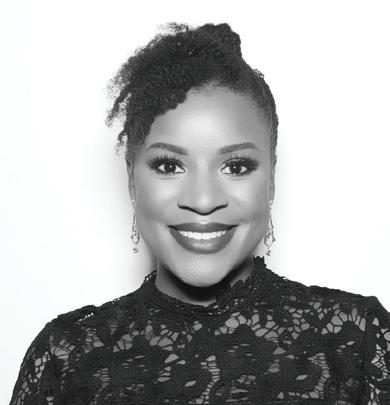


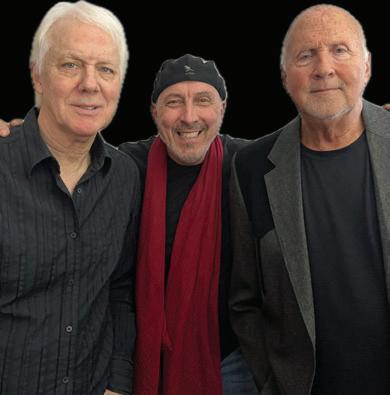

I acknowledge Henderson as a personal trainer (for 30+ years) for the way he incorporates biblical teachings with physical health; the end result, a program that will stick throughout our lives. I also





appreciate that he reminds us that time, discipline, and action are required on our part, both mentally and physically. And thank you for the chapter on the 7-Minute Fit Party! Balancing the Scales is available through Amazon and Gladrock Publishing. Thank you, Ron, for your inspiring work toward
















By Samer Zaky Research Assistant Professor in Oral and Craniofacial Sciences, University of Pittsburgh
At an auction in England in 2011, one of John Lennon’s teeth sold for just over US$31,000.
How much are your teeth worth?
Teeth are amazing little miracles. They light up our smiles, we use them to speak and we chew with them more than 600 times at every meal.
Yet, in a society where 1 out of 5 Americans ages 75 and up live without their teeth, many people may not realize that teeth are designed to stay with us for a lifetime.
I’m a dentist and an assistant professor spanning clinical dentistry and craniofacial regeneration research. Researchers like me are still deepening our understanding of tooth development, with the ultimate goal of serving patients with on-demand regrown ones.
In the process, I have developed reverence for natural teeth and for the complex beauty of these biological and mechanical masterpieces.
Designed for lifelong function
The secret of teeth longevity lies in their durability as well as in how they are anchored to the jaw – picture a hammer and its hand grip. For each tooth, durability and anchorage are functions of the complex interface between six different tissues; each alone is a biological marvel.
For anchorage, the cementum, ligament and bone grip the tooth at its root portion that is buried under the gum.

The ligament, a soft tissue that is about 0.2 millimeters wide (about the diameter of four hairs), attaches the cementum of the root on one end to the bone of the jaw on the other end. It serves to anchor the tooth as well as to cushion its movement during chewing. For durability, however, the secret lies in the enamel, dentin and pulp –our focus in this discussion.
Like hair or fingernails, the non-innervated enamel is not sensitive. The decay advances through the 2.5-millimeter thick (tenth of an inch) layer of enamel painlessly.
When caught at that phase during a dental checkup visit, the dentist can treat the decay with a relatively conservative filling that hardly compromises the tooth’s structural integrity. Because of its high mineral content, enamel is stiff. Its lifelong support is provided by the more resilient infrastructure – the dentin.
Dentin and pulp – body and heart
With less mineral content than enamel, dentin is the resilient body of the tooth. It is a living tissue formed of parallel tiny tubes housing

fluid and cellular extensions. Both originate from the pulp. The pulp is the tooth’s soft tissue core. Vastly rich in cells, blood vessels and nerves, it is the life source of the tooth – its heart – and the key to its longevity.
Like smoke detectors communicating with a remote fire station, the cellular extensions within the dentin sense decay as soon as it breaks through the nonsensitive layer of enamel into dentin. Once the extensions communicate the danger signal to the pulp, our tooth sensitivity alarm goes off: The tooth heart is in flames. The inflamed pulp initiates two protective actions. The first is to secrete an additional layer of dentin to delay the approaching attack. The second is toothache, a call to visit the dentist.
The earlier the visit, the less the drilling and the smaller the filling. If caught in
time, most of the tooth’s natural tissues will be preserved and the pulp will likely regain its healthy state. If caught too late, the pulp slowly dies out.
Without its heart, a nonliving tooth has no defense against further decay invasion. Without a hydration source, a dried-out dentin will sooner or later break under the forces of constant chewing. Besides, a tooth that has already lost a significant portion of its natural structure to decay, cavity preparation or root canal instrumentation becomes weak, with limited longevity.
In other words, the tooth is never the same without its heart. Pulpless, the tooth loses its womb-to-tomb endurance and mother nature’s lifelong warranty.
The tooth coming together More complex –and more precious – than a pearl within an oyster, the
formation of a tooth within our jawbone involves layered mineral deposition. As tooth development progresses in a process of ultimate cellular engineering, the cells of the six aforementioned tissues – enamel, dentin, pulp, cementum, ligament and bone – multiply, specialize and mineralize synchronously with each other to form uniquely interlocking interfaces: enamel to dentin, dentin to pulp, cementum to dentin and cementum to ligament to bone. In a progress akin to 3D printing, the tooth crown grows vertically to full formation. Simultaneously, the root continues its elongation to eventually launch off the crown from within the bone across the gum to appear in the mouth – the event known as teething. It is about that time, around 12 years of age, that our set of adult teeth is complete. These pearls are set to endure a lifetime and are undoubtedly worth preserving. Save your teeth, visit the dentist
Tooth decay, the most prevalent disease in humans, is both predictable and preventable. The earlier it is caught, the more the tooth integrity can be preserved. Since the process starts painlessly, it is imperative to visit the dentist regularly to keep those insidious germs in check.
During your checkup visit, the dental professional will clean your teeth and check for early decay. If you are diligent with your daily preventive measures, the good news for you will be no news –enough to make anyone smile. Samer Zaky does not work for, consult, own shares in or receive funding from any company or organization that would benefit from this article, and has disclosed no relevant affiliations beyond their academic appointment. This article is republished from The Conversation under a Creative Commons license.












































































































